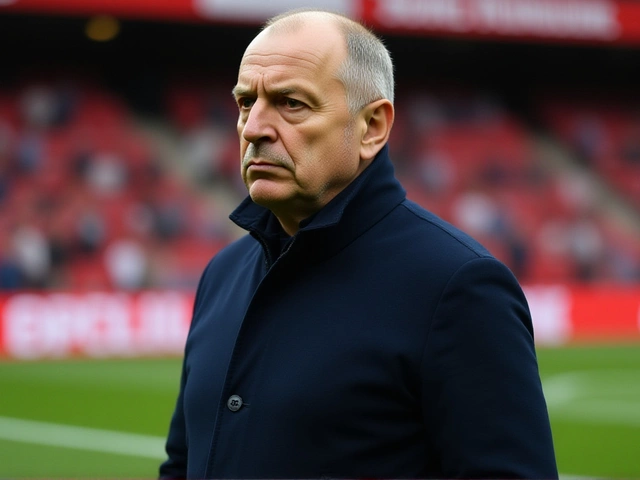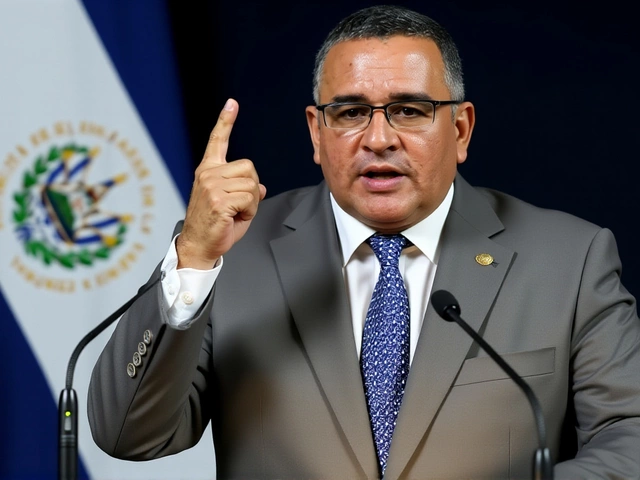The New York Mets and Texas Rangers stunned the baseball world on Sunday, November 23, 2025, with a one-for-one trade that flipped two franchise cornerstones: Marcus Semien, the 35-year-old two-time Gold Glove second baseman, heads to Queens, while Brandon Nimmo, the 32-year-old left fielder who’s spent his entire MLB career in New York, departs for Arlington. The deal, finalized just before 6 p.m. UTC and pending MLB approval, wasn’t just a player swap—it was a symbolic reset for two teams chasing different kinds of redemption.
The Why Behind the Swap
For the Mets, it was about defense, leadership, and closing the gap on a roster that crumbled under pressure last season. After missing the playoffs despite a promising start, New York watched their 2025 campaign collapse over the final 3½ months. President of baseball operations David Stearns, who took over after the 2024 season, made it clear: run prevention was priority one. Enter Semien. The veteran infielder, who won his second Gold Glove in 2025, posted a 3.3 WAR last season and has been a model of consistency since joining the Rangers in 2022. He’s played 1,629 career games, smacked 253 homers, and driven in 801 runs. But it’s his glove—his instincts, his range, his ability to turn double plays under duress—that sold New York.
"He’s the kind of guy who walks into the clubhouse and makes everyone better," said one anonymous Mets source. "Strong handshake. Look you in the eye. Red blooded. Salt-of-the-earth. Roll up your sleeves, rub some dirt on it and keep going."
Meanwhile, the Rangers, fresh off their 2023 World Series win but struggling to find consistent offensive balance in 2025, saw Nimmo as the perfect bridge between their young core and veteran stability. Nimmo, who waived his full no-trade clause to make the deal happen, has been a model of durability: played 151+ games in each of his last four seasons. His 2025 stats—.262 AVG, 25 HR, 92 RBI, .324 OBP, 114 wRC+—were career highs. And unlike many power hitters, he doesn’t strike out much. He gets on base. He scores runs. He’s hit at least 81 runs in each of the past three seasons.
The Numbers Don’t Lie
On paper, the trade looks balanced—but the context tells a deeper story. Semien’s 3.3 WAR in 2025 edged out Nimmo’s 2.9, but over the past three years, Semien’s value has consistently outpaced Nimmo’s by a wider margin. Semien’s offensive production dipped slightly after his 2021 breakout with Toronto (45 HR, 102 RBI), but his defensive metrics remained elite. Nimmo, meanwhile, showed remarkable growth in 2025: his OPS climbed from .504 in April 2024 to .815 in September/October 2025. He was heating up when it mattered most.
But here’s the twist: Nimmo’s walk rate dropped to a career-low 7.7% in 2025. That’s not just a stat—it’s a red flag. He’s becoming more of a hitter, less of a patient on-base threat. For a team like Texas, which needs someone to set the table for core players like Corey Seager and Adolis García, that’s a concern. Still, his consistency over 1,066 games, with a .364 career OBP, makes him a safe bet for a lineup that needs more reliable production.
Who’s Next?
The Rangers now face a void at second base. Semien, their Iron Man for three seasons, played 157 games in 2025 and was their most durable position player. His departure leaves internal options like rookie Cody Freeman, who played 36 games last year across three infield spots, as the most likely placeholder. But don’t expect them to sit still. With payroll flexibility and a clear need, Texas could target a free agent like Ha-Seong Kim or even pivot to a trade for a young, cost-controlled bat like Jose Altuve’s potential successor in Houston.
For the Mets, Semien isn’t just a replacement for the departed Jeff McNeil (who signed with San Diego in the offseason). He’s a leader. He’s been to the World Series. He’s played on winning teams. He’s the kind of guy who doesn’t need to say much—his presence alone changes the energy. With Francisco Lindor still in the fold, the Mets now have one of the most formidable middle-infield duos in baseball: Lindor at short, Semien at second. That’s a defensive nightmare for opposing hitters.

What This Means for 2026
This trade is just the opening act. Both teams are in rebuild-or-reload mode. The Mets, after firing manager Carlos Mendoza and overhauling their coaching staff, are clearly chasing a championship window before their core ages out. Semien is a short-term upgrade with long-term leadership value. He’s under contract through 2026, with a team option for 2027.
The Rangers, meanwhile, are playing the long game. They’re not rebuilding—they’re refining. Nimmo gives them a steady, high-OBP bat who can hit leadoff or cleanup. He’s a perfect fit alongside Corey Seager and Adolis García. If they can get a breakout season from Freeman or acquire a young, affordable second baseman, they could be in position to challenge the Astros and Guardians again.
Both teams are betting on timing. The Mets are betting Semien’s defense and grit can hold the line until their young pitchers—Endy Rodríguez, David Peterson—fully develop. The Rangers are betting Nimmo’s consistency can keep them competitive while they develop their next wave of prospects.
Why It Matters
This isn’t just another trade. It’s a shift in philosophy. The Mets traded a high-on-base, low-power left fielder for a power-hitting, elite-defending second baseman. They’re moving from patient, patient, patient… to aggressive, aggressive, aggressive. Nimmo was the face of patience in New York. Semien is the face of pressure.
And in a league where defense wins championships, Semien’s glove might be the missing piece the Mets didn’t even know they needed.
Frequently Asked Questions
Why did Brandon Nimmo waive his no-trade clause?
Nimmo, who spent his entire 13-year MLB career with the Mets, reportedly waived his full no-trade clause because he was drawn to the Rangers’ competitive window and their desire to build around him as a leadoff hitter. With the Mets in full rebuild mode and Nimmo entering the final year of his contract, Texas offered a clearer path to contention and a more defined role in a lineup that values his on-base skills.
How does Semien’s defense compare to other second basemen in MLB?
Semien ranked in the top 5 among MLB second basemen in Defensive Runs Saved (DRS) and Outs Above Average (OAA) in 2025. His range, quick release, and ability to turn double plays under pressure make him one of the most reliable defenders at the position. Only Jose Altuve and Andrés Giménez were rated higher in advanced metrics, and both are younger. Semien’s 2025 Gold Glove was his second, and he’s been among the top 10 in fielding percentage at his position for six straight seasons.
What’s the financial impact of this trade?
Both players are on nearly identical contracts for 2026: Semien earns $16.5 million, Nimmo $16.2 million. Neither team takes on additional salary, making this a pure player-for-player swap. That gives both organizations payroll flexibility to pursue other targets—whether it’s a reliever, a starter, or a young prospect in a trade. The lack of financial burden makes this a rare “clean” deal in today’s inflated market.
Will this trade affect the Mets’ chances in the NL East?
Absolutely. The Mets’ 2025 collapse was fueled by poor defense and inconsistent middle-infield play. Semien immediately upgrades that area, and his presence allows Francisco Lindor to focus on offense and leadership without worrying about defensive coverage. Combined with improved pitching depth, this trade makes the Mets legitimate contenders in a division now led by the Phillies and Braves. They’re no longer a team trying to survive—they’re trying to dominate.




